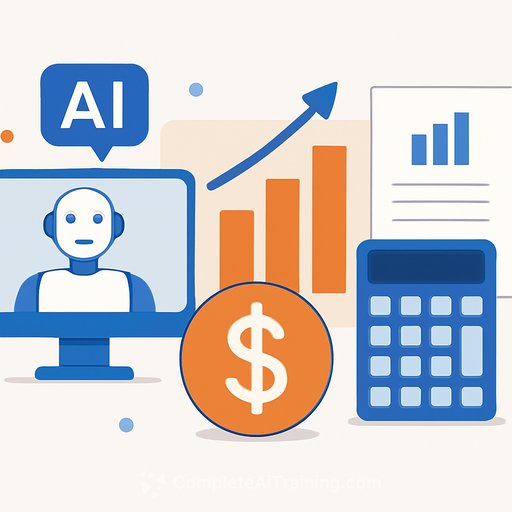TriNet (TNET): New AI HR tools, mixed signals on valuation
TriNet just rolled out a suite of AI-powered HR features aimed at small and mid-sized teams. The message is clear: use automation to reduce admin time and let HR focus on people, not paperwork. The big question is whether these tools will move the needle for customers-and the stock.
What's new for HR
Expect more automation across onboarding, policy queries, benefits questions, and basic case management. The promise: fewer tickets per HRBP, faster response times, and fewer errors on repetitive work. That's useful if the models are accurate, compliant, and easy for managers to use without training overload.
Market check
Investor sentiment is still soft. The 1-year total shareholder return sits at -20.02%, with negative momentum in recent months. Shares last closed at $63.33.
Two valuation reads to know
Upside case: a widely shared narrative pegs fair value at $77, or about 17.8% above the recent close. The logic is simple-continued investment in proprietary platforms and automation should improve operating leverage, expand margins, and lift earnings over time.
Counterpoint: a discounted cash flow (DCF) view estimates fair value near $62.23, which puts the shares slightly above intrinsic value on that method. Translation: expectations may already be in the price if cash flows don't accelerate.
What HR leaders should care about (beyond the stock)
AI is only useful if it reduces cost, cycle time, and risk. Before you buy into any HR AI pitch, define success in numbers you can defend to your CFO and legal.
- Cycle time: onboarding completion time, case resolution time, first-contact resolution rate.
- Workload: tickets per HRBP, hours spent on policy and benefits Q&A, manual data entry hours.
- Quality: error rate in payroll/benefits, misclassification or policy misinterpretation incidents.
- Adoption: active manager usage, repeat usage, satisfaction scores from employees and managers.
- Risk: bias testing results, audit trails, and override rates by human reviewers.
Pilot plan that actually sticks
- Pick one high-volume workflow (onboarding Q&A or leave-of-absence cases) and run a 6-8 week pilot.
- Set baselines first, then track time saved per case and error rates weekly.
- Enable human-in-the-loop review for sensitive outputs and set clear escalation paths.
- Train a small manager cohort; collect their feedback within 14 days and adjust prompts/policies.
- Integrate with your HRIS before scaling; manual copy-paste kills the ROI.
Questions to ask any AI HR vendor
- Data handling: where is data stored, how long, and who can access it? Is model training using your data opt-in only?
- Bias and compliance: how is bias tested and reported? Can they share audit logs and test results?
- Security: SOC 2 Type II? SSO, role-based access, encryption at rest/in transit?
- Controls: versioning for prompts/policies, rollback options, and clear approval workflows.
- Liability: what remedies exist for incorrect guidance that creates compliance exposure?
Key risks that could blunt the upside
- Healthcare cost inflation can pressure benefits pricing and margins, which matters for PEO economics.
- If client workforce growth slows, worksite employee counts drop-and so does revenue leverage.
- AI quality and adoption risk: if outputs are inaccurate or hard to trust, managers revert to email and chat, erasing gains.
How to align HR outcomes with Finance
Frame the decision as payback, not hype. For example: if AI cuts 25-35% of case-handling time on a function that costs $X per month, what's the payback period after licenses and internal change costs?
- Total cost: licenses, implementation, integration, training, and change management.
- Value drivers: reduced contractor spend, fewer errors/rework, faster time-to-productivity, lower ticket volume.
- Guardrails: require audit logs, approval gates, and quarterly bias/accuracy reporting.
Bottom line
TriNet's new AI features are a practical step for SMB HR teams that need to save time and cut errors. The stock picture is mixed: $63.33 vs a $77 upside case, with a DCF estimate near $62.23. Let the numbers decide-pilot fast, measure hard, and scale only if the ROI shows up in your dashboard.
Helpful resources
- EEOC guidance on AI in employment
- NIST AI Risk Management Framework
- AI upskilling paths by job function
This content is for information only and is not financial advice. Do your own research and consider your organization's goals, risk tolerance, and constraints before making purchase or investment decisions.
Your membership also unlocks:






